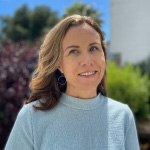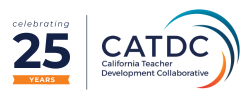What it Means to be White: We’ll Never Know if We Don’t Learn to Sit Deep Within It

I was well into my twenties the first time I was confronted with my racial identity. I’d just begun the Mills College Credential program and I was bubbling with excitement. I’d wanted to be a teacher since early college days. That first term, I took a class called Introduction to the Profession. From the course title, I’d imagined that we’d learn about lesson planning and classroom management. Maybe we’d focus on different learning styles or multiple intelligences. Instead, on the first day of class, the professor passed out copies of Peggy McIntosh’s seminal piece, “White Privilege: Unpacking the Invisible Knapsack,” a reading often used in teacher education programs as a standalone as opposed to a jumping off point.
The room fell silent as my new classmates and I readied our pens for the exercise set before us. Number 1: I can if I wish arrange to be in the company of people of my race most of the time. Check. Number 2: If I should need to move, I can be pretty sure of renting or purchasing housing in an area which I can afford and in which I want to live. Check. I had just rented my first apartment without even meeting the landlord in person. Number 3. I can be pretty sure that my neighbors in such a location will be neutral or pleasant to me. Check. Number 4. I can go shopping alone most of the time, pretty well assured that I will not be followed or harassed. Check. Within minutes I’d answered yes to all 26 questions without hesitation. And just like that, I was flung into what Janet E. Helms defined as the “disintegration” phase of my white racial identity development. In a single class period, my prior conception of the world and my place within it had been challenged and I was flooded with feelings of shame, guilt, and embarrassment. Perhaps number 27 should be, I can make it well into adulthood without any real awareness of my race.
My first year teaching, I was the only white person in my classroom. One day, in the Spring, a second grader named Christina settled in beside me as we walked around the block looking for things shaped like hexagons. I could tell that she was pondering something other than geometry. After a few moments of silence, she said with a steady certainty in her voice, “Ms. Gleason, I like you too much for you to be white.” Any humor I found in this comment quickly turned to feelings of deep puzzlement. Her awareness of my whiteness was front and center. It was another point of disintegration for me. Something I’d only vaguely understood about myself for most of my life was already understood by this seven-year-old on both implicit and explicit levels. She knew that whiteness meant something powerful and perhaps even scary. She understood that having a white teacher had real implications for how she might be seen and treated.
How had I made it all the way to adulthood with almost no understanding of my racial identity? How had I been allowed to exist in such a vacuum? In my years as an anti-racist educator, so many white people have shared similar stories with me, stories of ignorance followed by confusion, guilt, and shame. But even when we have these awakenings, when we are faced with all that we didn’t and still don’t know, it’s easy to look away or grow defensive, even angry at that person or event asking us to pay attention. I wish I could tell you that I moved through Helms’s racial identity model diligently and became better informed and more anti-racist with each passing year. Instead, I did what I believe most white folks do; I dipped a toe in here and there and then retreated to a place of comfort that sometimes lasted for embarrassingly long stretches. It took me many years to realize that this is how whiteness works. At every turn I was lured into what I like to call a whiteness coma, a cozy place of familiarity that did not require me to confront my power and privilege.
Last May, when George Floyd was murdered in the street by a police officer who kneeled on his neck for more than nine minutes, white people were aghast. “How could this happen?” we asked. “What can we do?” We were having a collective awakening. And it was palpable. All of a sudden, white people were reaching out, looking for ways to connect, to understand. We were floundering a bit, but many of us were finally ready to have conversations we’d been putting off. We finally read the books we’d been meaning to. We attended anti-racist workshops and webinars. And as BIPOC students, alumni and staff shared stories over social media about their experiences in schools, some of us tried to consider the role we played in their pain. Many of us realized that we had a lot of catching up to do. But I have come to understand that to catch up, we have to slow down. Let me say that again. To catch up, we have to slow down. In slowing down, we can ask questions about how and why so many of us were socialized to believe that we did not have a racial identity, that our whiteness just meant normal. In slowing down, we can take the time to look into the past to understand how whiteness was created in our society and in ourselves.
This is a time for white people to stay awake, to resist the whiteness coma that we know is coming for us. And while it can feel very strange to meet in a group of white people, it’s one aspect of the work we must do. The reasons we do anti-racist work together as white people are specific and purposeful. We learn together so that we can do some catching up without causing harm to our BIPOC colleagues, friends, and community members. We learn together so that we can take the risks and make the missteps that help us grow. We come together to focus on truth telling and healing, not performative behaviors that take us out of our bodies. We come together to build accountability partners so that we can resist the escape hatches together. We do this uncomfortable work so that we can, in the words of Dr. Bettina Love, move beyond allyship toward becoming the coconspirators we need to be for the creation of the anti-racist world we all deserve.

Liza Gleason has been an educator in the Bay Area for more than 25 years. She earned her teaching credential and Masters at Mills College at the start of her career and is currently back at Mills working toward a Doctorate in Educational Leadership. Liza has taught at the elementary and middle school level in both public and independent schools. She is passionate about anti-racist teaching practices. As a humanities teacher, after years of using mostly traditional resources and texts, she worked to create an anti-racist curriculum that decentered whiteness. Currently, along with her graduate school work, which focuses on white teachers and anti-racism, Liza coaches individual teachers and teaching teams on their pedagogy and instruction at Live Oak School and for CATDC as part of the Equity as Excellence team.
